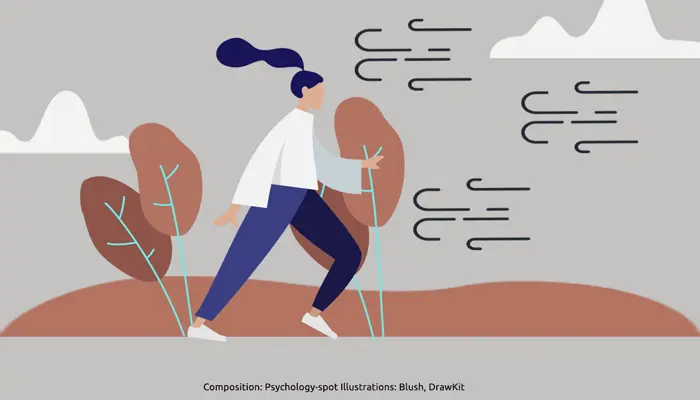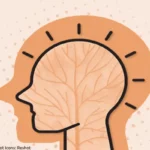
On many occasions we cried without being fully aware that life was doing us a favor. There are situations that, at a given time, put our backs to the wall, generating deep sadness or anger and in some cases even making us question the meaning of life. However, later, considering them in perspective, we realized that these situations have strengthened us, gave us a lesson, turning us into better people or at least more sensitive.
In this regard, Albert Einstein used to say that if there was something he was grateful of in his life was that he met all those people who told him “no”. Sigmund Freud said he was a lucky man because in his life nothing have been easy. All the great personalities of history share one characteristic: they refuse to be puppets in the hands of fate, they are aware that problems and setbacks are opportunities for growing.
In fact, Thomas A. Edison said: “I have not failed, I just found 999 ways not to make a light bulb”. For genes, every mistake, every negative event or “failure” becomes a kind of fuel that powers their perseverance. This does not mean they do not suffer when things don’t go as they would like, but decide to turn that pain into an encouragement to move forward.
The great figures of history, as well as many anonymous people who cultivated resilience, are aware that not all bad comes to harm and know that, even if at first they fail to understand the meaning, or the lesson that contains, the situation will allow them to grow.
Sometimes we only need to change perspective
We tend to think that any loss, setback or disappointment is something negative that hurt us. This is because we focus on the negative side and are not able to analyze the situation from a wider perspective.
In this regard, when we find ourselves in such a situation we might think of the metaphor of the carpet. That is, each carpet has two sides, if we just look at the bottom side, the one in contact with the floor, we will see only a messy tangle of wires, we can not find the meaning or see the design. The problem depends only on the fact that we are looking from the wrong point of view, a perspective that can lead us to draw wrong conclusions that would feed a useless suffering. But if we can understand that we can turn the carppet and observe it from the upper side, we would not only discover its design, but is also likely we will be amazed by its beauty.
Our mind works in much the same way. In fact, we have a kind of fixation on the search for the meaning of things. When we fail to “fit” a situation in the history of our lives, it’s as if this would remain suspended, blocked, becoming a broken record that plays endlessly.
In this regard, a study conducted at Harvard University found how painful events are recorded in the brain. These psychologists made that some people who suffered a trauma could listen to the description of the incident. Meanwhile their brain was subjected to MRI. So it was seen that when people were reliving the painful experiences, some parts of the brain such as the amygdala, the nucleus of fear, and the visual cortex, were activated, but at the same time the Broca’s area, which is the responsible for the language, was disactivated.
This means that when people experience a trauma, they relive it as if were a real situation, at least until they can not give it a meaning, and integrate it into their life experiences. To do it, it is often enough to change the perspective, look at it from another angle, if possible a more constructive one.
The useful suffering
The fact that some situations can help us to grow, become a better and stronger person, does not mean that they do not hurt and cause suffering. But it is important to distinguish between useful and useless suffering.
Unnecessary suffering is the one that keeps us stuck, makes us prisoners and does not allow to flow with the natural course of life. This suffering don’t have a healing power, on the contrary, it feeds sadness, hatred and resentment.
Instead, the useful suffering is the one that regenerates us, allowing us to get rid of anger, sadness and indignation. The useful suffering is like a river that flows naturally and that, eventually, leads to a life lesson.
The useful suffering allows us to embark on the challenging path and arrive at our destination strengthened. This kind of suffering breaks us into a thousand pieces to return to gather us back together, giving us a more sensitive version and at the same time strengthening ourselves.
An example of this comes from a study conducted by a group of researchers at the University of California, who showed that we can take advantage of adversity to grow and make drastic changes in our lives. These psychologists examined 209 women with breast cancer diagnosis and found that 60% of them believed that the changes they experienced in the course of the disease were positive and learned to see life from a positive perspective and enjoy more of this.
Of course nobody wants to get sick, suffer a loss or experience a failure, but it is up to us to take advantage of the situation to learn and grow or, on the contrary, sink into a sea of complaints that do not lead anywhere.
After suffering come san opportunity
In most cases it is difficult to see the growth opportunities in difficulties. Therefore you need to stay alert and preserve the idea that not all bad comes to harm you. There bad things that are “necessary”, that contain life lessons and it would be a shame not to take advantage of them.
Therefore, remember that sometimes life is not saying to you “no”, but only “wait”, sometimes the best opportunities present themselves disguised as problems, sometimes the difficulty is an opportunity to change the path. So, the next time you make a mistake, you suffer a loss or have a setback, ask what you can learn from the situation. It is a change of perspective that will be surely worth it.
Sources:
Rauch, S. L. et. Al. (1996) A symptom provocation study of posttraumatic stress disorder using positron emission tomography and script-driven imagery. Arch Gen Psychiatry; 53(5): 380-387.
Greer, S. et. Al. (1990) Psychological response to breast cancer and 15 year outcome. Lancet; 49-50.



